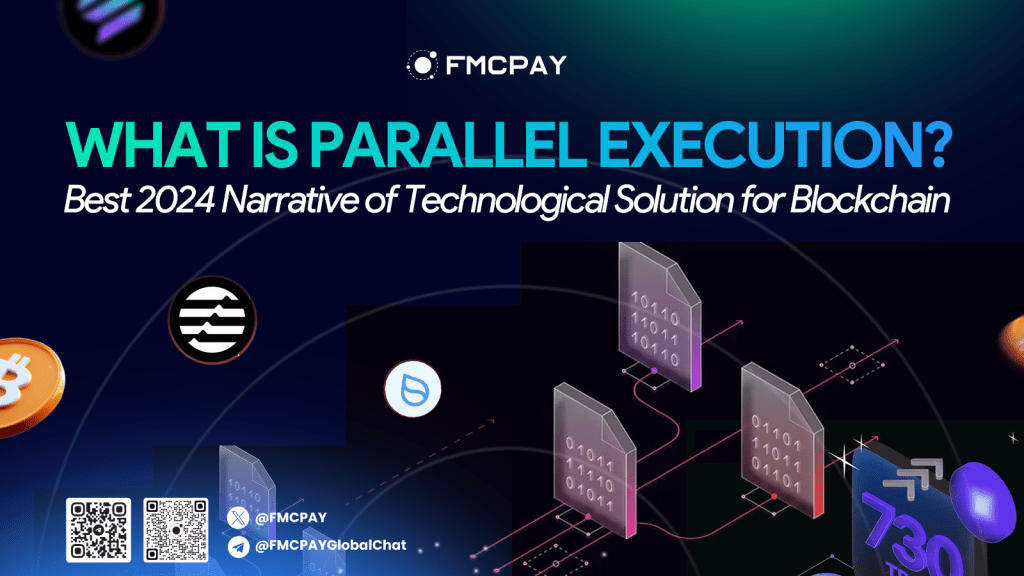Parallel Execution is becoming a potential blockchain trend in the future, with notable names such as Solana, Aptos, Sui, and more. Let’s explore what is parallel execution with FMCPAY!
What is Parallel Execution?
Parallel Execution or EVM Parallelization emerges as a pivotal buzzword and narrative heading into 2024 within the blockchain space. It represents a solution adopted by various blockchains to process independent transactions simultaneously, revolutionizing the way transactions are executed in a unified timeframe. This approach significantly enhances blockchain performance and scalability.
Parallel Execution addresses the limitations posed by Sequential Execution, which is predominant in Ethereum and EVM-compatible blockchains like BNB Chain, Polygon, Avalanche, and others. Traditional models, as seen in Bitcoin and Ethereum, process transactions sequentially, limiting performance as only one transaction is executed at a time. This hampers transaction speed and contributes to rising transaction fees on the network, particularly during times of slow transaction processing, adding pressure to the Mempool.
The mechanism of Parallel Execution
Parallel Execution has emerged as a revolutionary technique to address these limitations. It encompasses database-level and Virtual Machine (VM) level approaches, each with its own methods and implementations. Database-level approaches include sharding and DAG, used by platforms such as NEAR Protocol, Hedera, and Fantom. These methods distribute blockchain data across multiple nodes or organize them in the network for concurrent processing.
In the Parallel Execution setup, multiple transactions are grouped together and processed in parallel by various validators on the network. This enhances the network’s TPS processing capability, allowing increased throughput and scalability. To ensure that transactions are processed in the correct order, blockchain networks can deploy consensus algorithms and protocols to establish transaction order and achieve agreement among all participating validators.
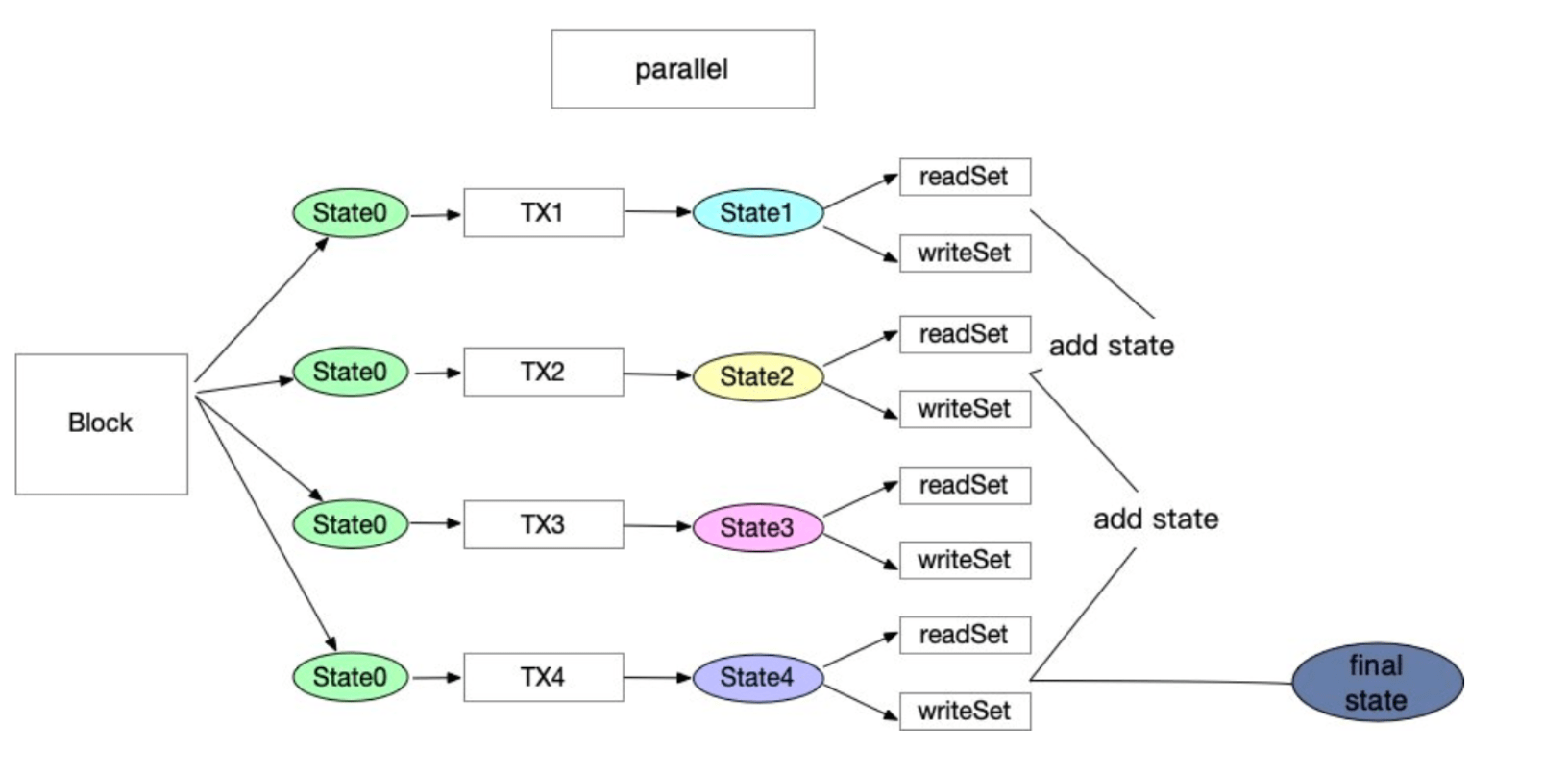
Note: Transactions interacting with the same smart contract, such as swapping tokens in a pool with AMM, can alter the contract’s state, making parallel execution unfeasible. Given the current level of integration among applications, determining dependencies is a challenging task.
For instance, if a user consecutively swaps twice in a pool, those two transactions will be dependent on each other and require Sequential Execution instead of Parallel Execution.
Potential and Limitations of Parallel Execution
The smart contract platform allows developers to create various DApps, and to execute these DApps, they commonly utilize a shared computing engine. Each node in the network runs this computing engine, executing applications as well as user interactions with those applications. When nodes receive similar execution results, they achieve consensus and update the network state.
The Ethereum Virtual Machine (EVM) is the dominant execution engine with approximately 20 different implementations. Since the invention of the EVM, many developers have adopted this tool. In addition to Ethereum and Layer 2 solutions on Ethereum, other blockchains such as Polygon, BNB Chain, and Avalanche have employed the EVM as their execution engine and focused on modifying consensus mechanisms to enhance network throughput.
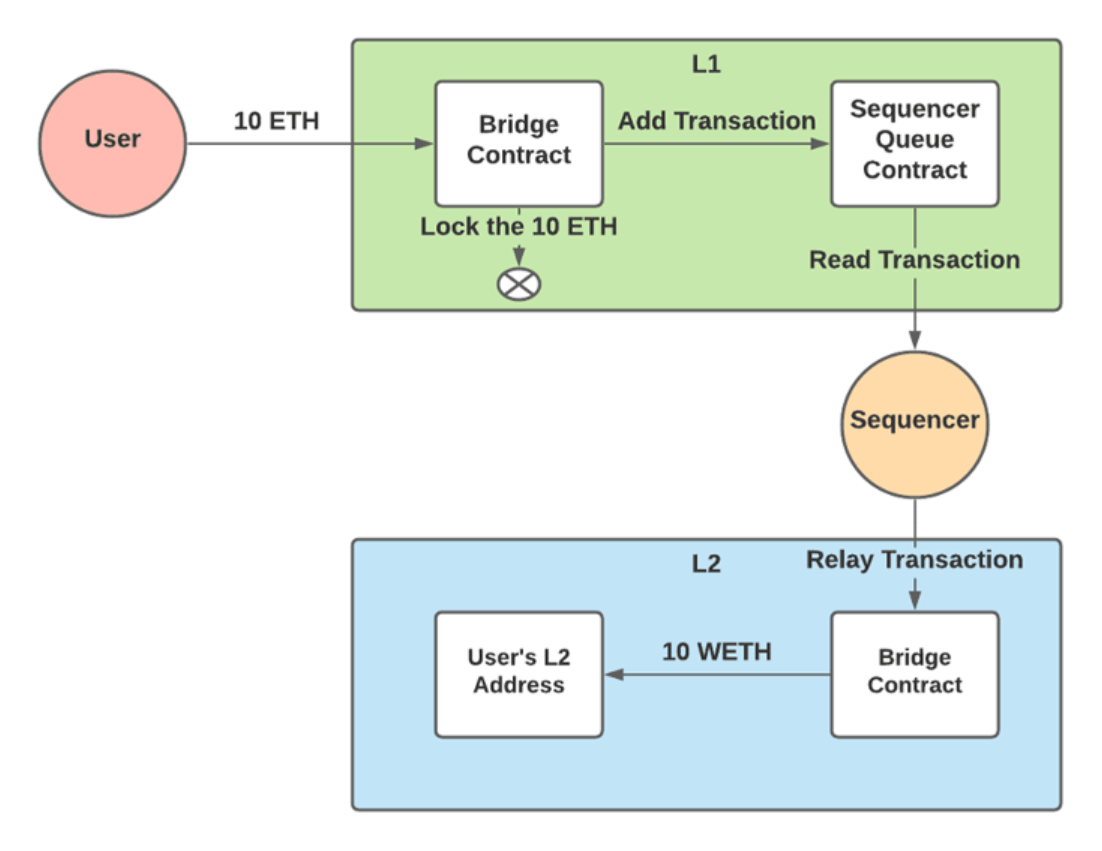
The primary limitation of the EVM is its use of Sequential Execution to execute transactions. Essentially, the EVM processes one transaction at a time and pauses all other transactions until the state of the transaction is updated on the blockchain, even for two independent transactions.
Example: If A transfers money to B and C transfers money to D, the EVM still cannot execute these two transactions simultaneously.
Potential:
1. Enhanced Performance:
- Parallel Execution strengthens the ability to process multiple transactions simultaneously, improving the overall performance of the blockchain network.
- Significant enhancement in TPS (Transactions Per Second) and reduced processing times provide a better user experience.
2. Scalability Improvement:
- The scalability of the network is increased as multiple transactions can be executed simultaneously without compromising overall performance.
- Helps address congestion issues in blockchain networks, especially those using the EVM model.
3. Reduced Transaction Costs:
- Improved performance and enhanced scalability contribute to alleviating pressure on transaction costs.
- Users can experience lower and significantly reduced transaction fees when conducting transactions on the blockchain network.
4. Support for Complex Applications:
- Opens up the possibility of deploying more complex applications, such as DeFi and NFTs, without compromising the system’s performance.
Limitations:
1. High Complexity:
- Parallel Execution requires complex synchronization and management between simultaneously executing transactions, potentially increasing the complexity of the network.
2. Demand for Robust Infrastructure:
- Implementing Parallel Execution demands robust infrastructure with high processing capabilities to ensure performance and stability.
3. Decentralization and Centralization Concerns:
- A larger network of nodes may lead to decreased decentralization and increased centralization concerns, raising questions about the system’s decentralized nature.
4. Complexity in Determining Dependency:
- Determining dependencies between transactions can become intricate, especially in applications interacting with the same smart contract.
Blockchain Projects Utilizing Parallel Execution
MONAD
Monad is a blockchain project specifically designed to address scalability issues in traditional Ethereum Virtual Machine (EVM). It employs the Parallel Execution strategy integrated with EVM, ensuring compatibility with Ethereum while optimizing blockchain performance by accelerating transaction processing and system efficiency.
By achieving parallel execution capability, Monad aims to significantly increase transaction throughput and alleviate congestion issues in the current EVM chain under high loads. Its ultimate goal is to reach a bandwidth limit of 400,000 TPS.
The core of Monad’s Parallel Execution strategy lies in the ability to identify and execute transactions in parallel without common dependencies. While both Monad and Ethereum blocks are sets of linearly ordered transactions, Monad enables transactions to proceed in parallel without affecting the final result through optimized executable strategies. This parallel execution strategy includes the following key technologies:
– Optimistic Execution: Initiating the next transactions before the completion of previous transactions. This method may lead to transaction dependencies, but by monitoring input and output comparisons, inconsistencies are rectified by re-executing transactions to ensure accurate results.
– Scheduling and Dependency: Predicting transaction dependencies through static code analysis and intelligently scheduling transaction execution to optimize parallel execution efficiency.
– State Merkleization: Although transactions are executed in parallel, the state updated by each transaction needs to be sequentially merged to ensure the consistency of the entire block’s state.
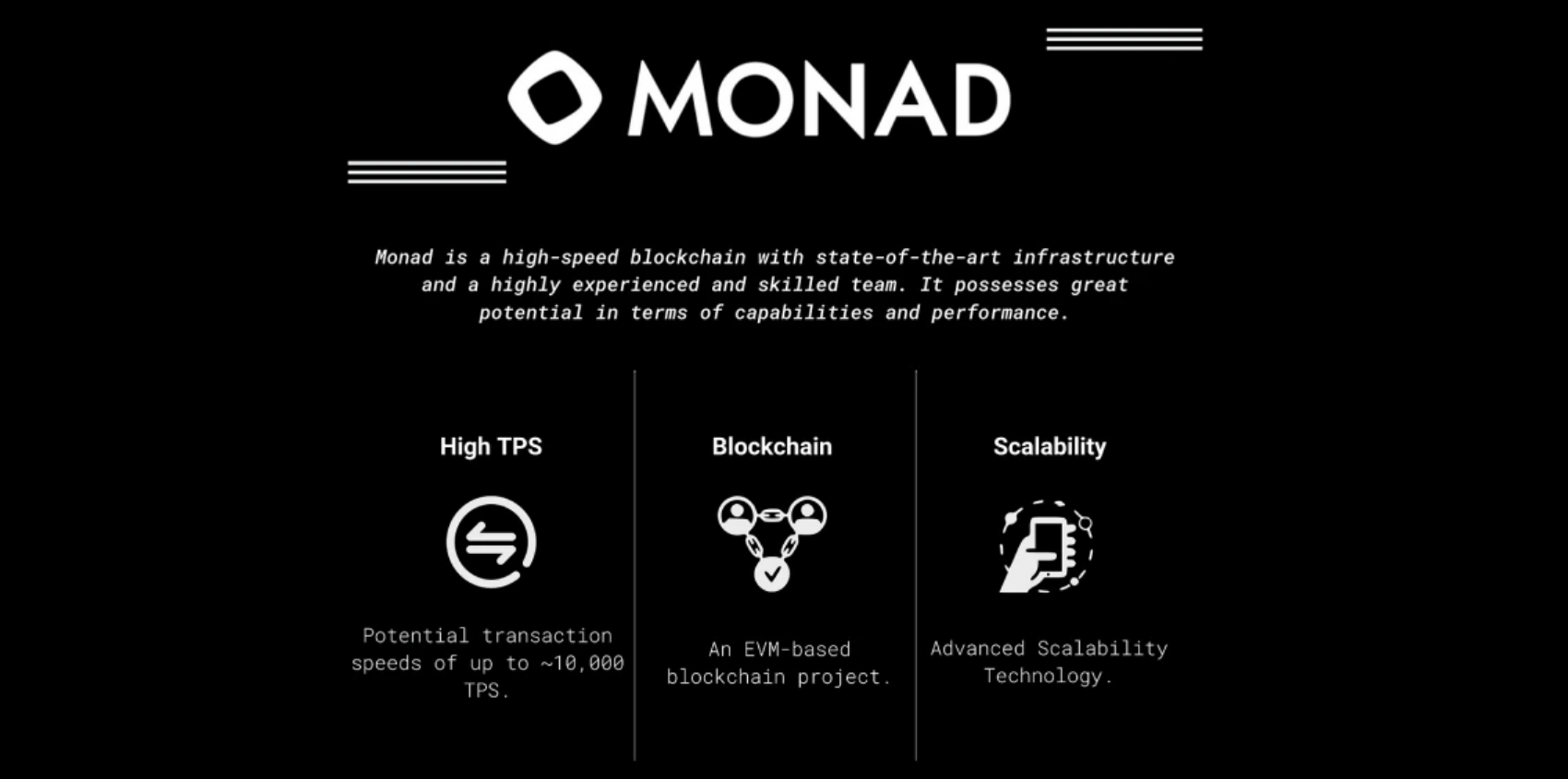
SEI V2
SEI is an open-source Layer 1 blockchain designed to optimize transactions and provide advanced infrastructure for various transactional applications, including DeFi, NFT markets, and DEX games.
SEI is not a new project, and its mainnet was launched in August of this year. In its previous V1 version, SEI deployed specially optimized features for transactions, such as preventing front-running transactions and supporting batch order processing to enhance transaction security and efficiency.
– Optimistic parallelization: SEI also applies optimistic parallelism, allowing the chain to execute all transactions in parallel. When transactions reach the same state, the system monitors the storage touched by each transaction, and conflicting transactions are re-executed in order until all conflicts are resolved.
– Geth Compatibility: As part of the core Sei binary, Sei nodes will automatically import Geth, deploying Ethereum’s Go Virtual Machine, to process Ethereum transactions and update results through a specialized Sei interface created for EVM.
– SeiDB Storage Optimization: SEI redesigns the storage interface and utilizes more efficient data structures and databases to optimize read and write performance simultaneously while reducing state expansion.
These technologies together form the core of SEI V2, making it not only a fully parallel EVM but also highly performant and compatible. SEI provides a standardized execution environment, expanding the scope of applications and enhancing its appeal.
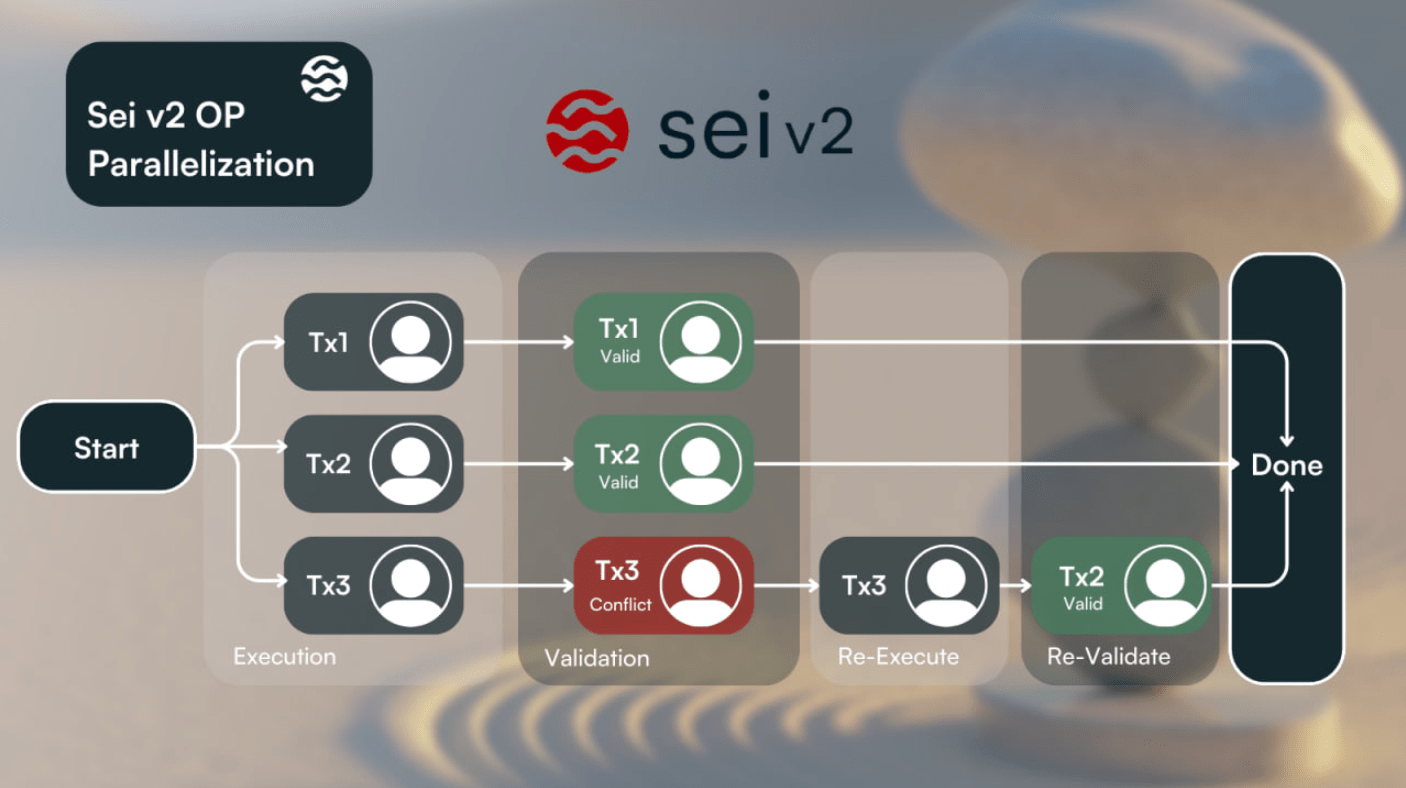
NEON EVM
Neon EVM is the first parallel Ethereum Virtual Machine built on the Solana blockchain, designed to improve efficiency and scalability through parallel transaction processing.
Its major feature is ecosystem interoperability, allowing developers to use Solana’s parallel execution architecture to scale Ethereum dApps and optimize network efficiency through parallel execution, accelerating transaction speed and reducing costs while maintaining compatibility with the EVM environment.
In terms of specific deployment, Neon converts Ethereum transactions into Solana transactions, then sends them to the Solana verifier, which executes on Solana and updates the Neon program’s state. The specific process can be understood as follows:
– Users sign transactions, and these transactions are sent to the broker. The broker, an account on Solana running a simulated EVM, is responsible for executing Neon-txn.
– The broker requests the blockchain state from Solana and runs the Neon-Txn test on the Solana state.
– Based on the received data, the broker creates a new transaction according to Solana’s rules and sends it along with packaged data to Solana for data processing.
– Finally, following ethical rules, the transaction is sent back to Neon for signature verification, and after verification, the transaction is executed in parallel on Solana.
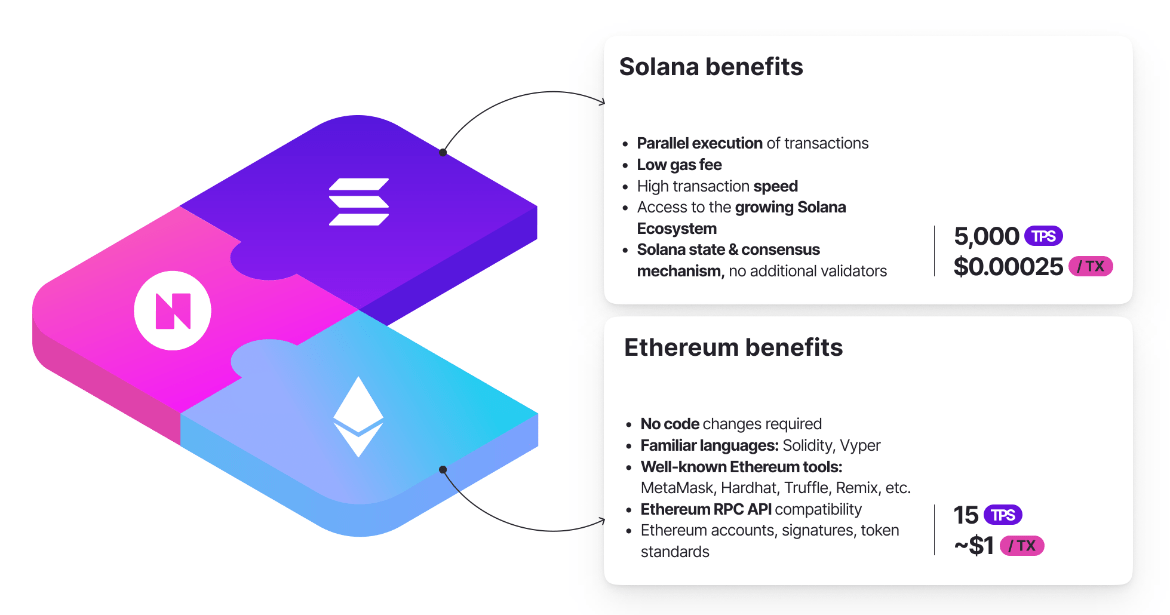
In terms of token performance, NEON has tripled in value over the past month, but its total market value is significantly lower than SEI. Considering the recovery of the Solana ecosystem and the token frenzy, NEON, as the sole parallel EVM in the Solana ecosystem, remains noteworthy for its next market performance.
Conclusion
Parallel Execution is a method employed in blockchain systems to execute transactions independently simultaneously, aiming to enhance performance and scale the network. This is achieved by breaking down tasks and processing them concurrently. Neon EVM, Monad, and Sei Network have implemented Parallel Execution to optimize performance and reduce transaction costs on the blockchain network. This method is considered highly effective in supporting transactions for users.
The presence of these projects somewhat indicates that the puzzle piece of Parallel Execution is gaining attention from many industry giants, prospects in the upcoming bull run season.
FMCPAY RESEARCH (VINCΞ)

